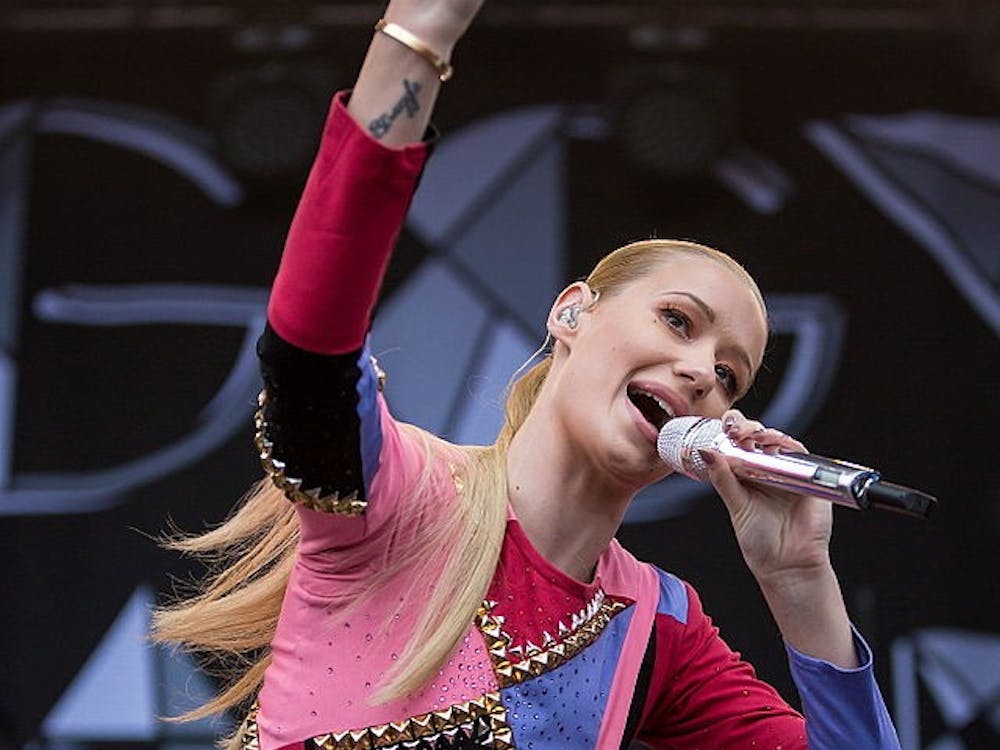Drums thump. Guitars strum. The glistening beat could be a lifeline to Cuba, pumping hot blood laced with rum. If the Buena Vista Social Club doesn't intoxicate you, no salsa band ever will.
"Buena Vista Social Club," Wim Wenders' documentary on the Grammy Award-winning band, follows it through two concerts -- one in Amsterdam and the other at Carnegie Hall -- and through the streets of Havana. As the octogenarian legends that comprise the band swap stories and spin out melodies, the sweat rolls off their cheeks like the smoke rolling up from a carefully wrapped cigar.
Several years ago, American producer/guitarist Ry Cooder decided to bring together the most talented Cuban musicians he could find. The pre-revolutionary Cuban music had been lost somewhere and he wanted to find and reclaim it. Now, he has immortalized it, with the help of several living legends. When Cooder met such renowned artists as Ibrahim Ferrer (in his 70s) and Compay Segundo (90, but young at heart) he knew he had a great, but perhaps brief, opportunity to capture the rhythms so contagious in these men's souls.
Ferrer was shining shoes when Cooder found him, and pianist Rubén González hadn't played in 10 years. Cuban society had left these monuments to dust, but Cooder swept them up again, and together they produced some very young and refreshing music. The resulting album -- named, like the band and the movie, for a 1940s Havana venue -- sold over 1.5 million copies and awoke a sound long forgotten, revitalizing the aged musicians.
While collaborating with Wenders on the director's 1997 film, "The End of Violence," Cooder slipped him a copy of the "Buena Vista" disc. The music seduced Wenders and inspired his next film project.
"Buena Vista Social Club" avoids political issues but doesn't hide how the spirits of these musicians have been affected by their surroundings. Wenders's camera captures the rotting elegance of abandoned buildings, empty beaches and streets choked with stray dogs and children, all under the glamour of a crisp blue sky. The director misses no opportunity for metaphor.
One at a time, Wenders introduces the audience to the musicians. Shooting on versatile digital video, Wenders selects areas in Havana that reveal not only the personalities, inspirations and histories of the artists, but also the dusty splendor of the city. He illuminates their lives by inter-cutting these personal recollections with performance footage and scenes from the recording studio. In one splendid scene, González, the 80-year-old pianist, plays as the audience watches dozens of children learn to dance, tumble and fence in a glorious old performance hall.
Ferrer emerges as the central figure, seducing the audience with his dimpled smile and smooth-as-honey voice. He performs with a precious, restrained exuberance, dancing ever so slightly to the palpitating music as he sings. Soon after the first "Buena Vista Social Club" album was released, the band reconvened to put together a new album featuring Ferrer.
The close of the documentary follows the band around New York City for two days in July of 1998, when they played at Carnegie Hall. Touchingly, the Cubans take delight at the commercial foolishness of America. Standing outside numerous tourist shop windows, one turns to the other and says, "They sell everything here!" Strolling around the city with their arms around each other, they expose even more deeply the youth submerged beneath their weather-beaten faces.
Yet there is an ever-present sadness to the picture. The sounds are fleeting; even with recordings there can be no permanence to the music. Records do these musicians no justice, because their songs encompass so much, communicating lifestyles and histories through tilting hips and shaky smiles. As the Buena Vista Social Club members pass away, they will take with them some of the magic.
Grade: A






